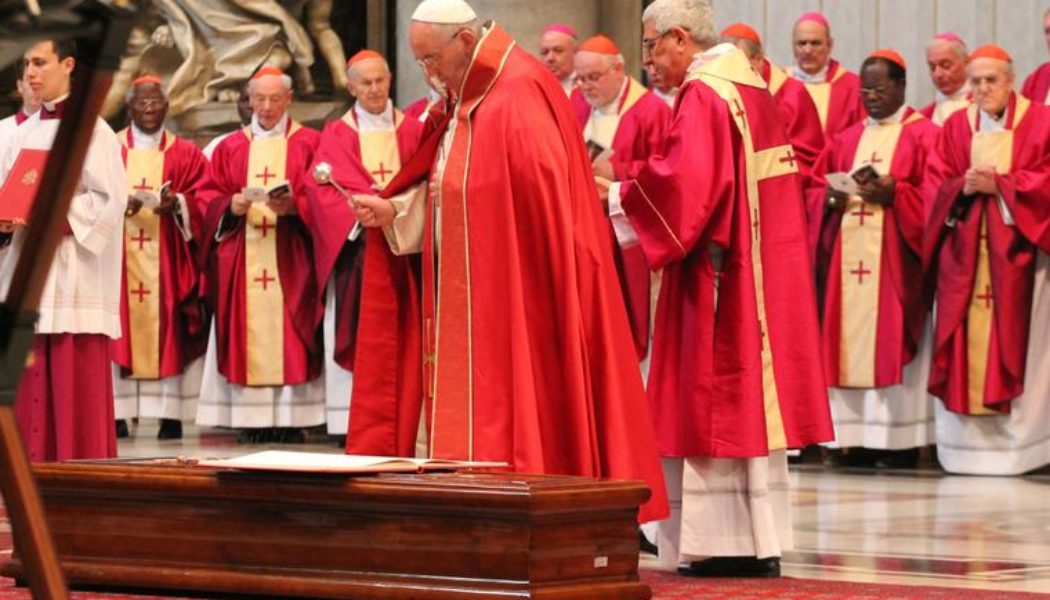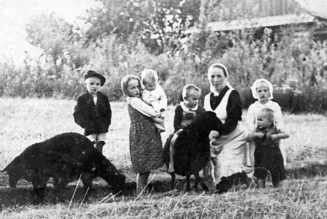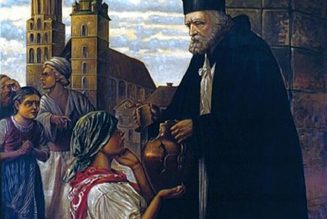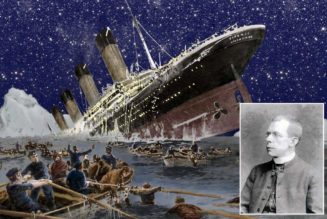
ANALYSIS: The revisions reflect Francis’ desire to simplify the rites and, in some instances, to dispense with centuries-old traditions whose ancient roots had become difficult even for Vatican experts to decipher.
Pope Francis, who turns 88 on Dec. 17, now knows exactly what his eventual funeral will be like.
The specific details are laid out in the second edition of the Ordo Exsequiarum Romani Pontificis, which was produced by the Office for the Liturgical Celebrations of the Supreme Pontiff and released to the public on Nov. 19.
Pope Francis, who approved the revised rites in April, received the first copy of the printed volume on Nov. 4, according to Vatican News.
The revisions reflect Francis’ desire to simplify the rites and, in some instances, to dispense with centuries-old traditions whose ancient roots had become difficult even for Vatican experts to decipher.
But while certain details have changed, the substance of the papal funeral has not: It remains a public event marked by the kind of attention and distinctive protocols one would expect to honor an important world leader.
This is still the case, even though Francis wanted to ensure that “the funeral of the Roman Pontiff is that of a pastor and a disciple of Christ, and not of a powerful person of this world,” as Archbishop Diego Ravelli, master of pontifical ceremonies, has explained.
So what has changed?
For one thing, the certification of the Pope’s death no longer takes place in the room where he dies but in his private chapel. Prior to this certification, the camerlengo, the prelate who runs the Vatican between the death or resignation of a pontiff and the election of his successor, calls the pope by his baptismal name three times, confirming there is no response. The baptismal name is used, rather than the papal name, since the deceased pope’s papal identity and function ceases upon his death.
Another change is that the pope’s body is immediately placed inside an open coffin, rather than an elevated bier, the so-called canaletto (“death bed”), as happened with John Paul II and Benedict XVI. Also, the revised rites eliminate the use of three coffins — one of cypress, one of lead and one of oak. Instead, the body is placed in a simple wooden coffin with a zinc lining and transferred immediately to St. Peter’s Basilica, without passing through the Apostolic Palace for another exposition, as was done previously.
The division into “three stations remains, that is, the three stages of the deceased Pope’s journey: first in the house of the deceased, then in the basilica, and finally in the place of burial.”
The third stage marks another major revision: The Pope can be buried outside the Vatican if he so chooses. Francis, as we know, has already done so: He will be buried in Santa Maria Maggiore, together with five other popes who chose that basilica as their final resting place.
There is also talk of a thorough revision of the new Ordo regarding the harmonized texts and translations. The Ordo also updates the Litany of Saints. These are sung during the funeral rites during the translation to St. Peter’s Basilica and during the traditional supplication of the Church of Rome.
The tradition of the novemdiales remains — the nine days of Masses of suffrage for the late pope, though in revised form, with prayers from the Roman Missal included and readings omitted.
It is the custom to celebrate 100 Masses to mourn the deceased pontiff. This is because the more significant the responsibility to which one is called, the greater the possibility of error and sin and, therefore, the more necessary the suffrages and prayers are. It is not known whether this tradition will be abolished, but it is not necessarily part of the Ordo.
Such relatively minor adjustments do not change a substantial fact, notes Msgr. Stefano Sanchirico, an official of the Vatican Apostolic Archives and professor of history of the Roman Curia: The death of the pope and the display of his body are public.
“Indeed, death and the preceding moments become the occasion to give the supreme testimony of faith in the resurrection,” said the monsignor, a former prelate of the Antechamber of His Holiness.
Before this reform, the last reforms to the funeral rite of the popes were those approved by St. John Paul II and supervised by Archbishop Piero Marini as master of papal liturgical celebrations.
As Archbishop Ravelli explained, the new ritual book “is not designed as a comprehensive missal, but rather as an ordo in the proper sense — a guide containing ritual instructions, the development of the rites and specific texts, while referencing existing liturgical books such as the missal, lectionary and gradual for everything else.”
“The result,” he said, “is a streamlined volume, easy to consult and precise in its ritual instructions.”








